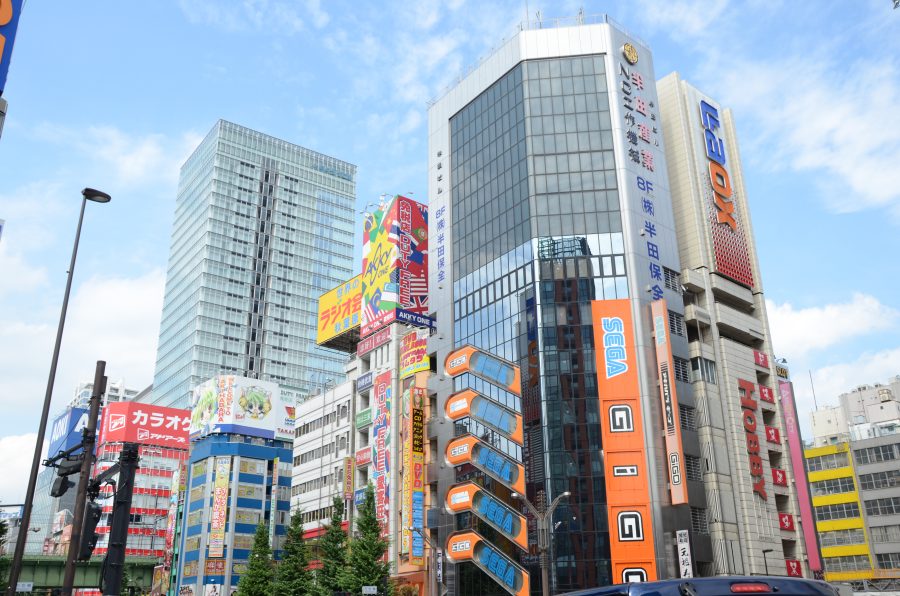Imagine, for a moment, that you’ve just spent 24 hours in a seat, cramped between two adults who’ve nodded off in a way that puts you in a most uncomfortable position. You’ve got one tiny stream of air blowing on the crown of your head, which is supposed to help subdue the heat radiating off Mr. Snore and Mrs. Shuffles. You stand up, probably bumping your head, shambling into a line, so you can wait in another line, so you can get your bags, so you can get into a third line, so you can leave. The minute you step out of that crowded airport, however, the whole journey is worth it. Welcome to the Earth outside the United States.
France:
Although France seems to be a fairly common tourist destination, many visitors usually just visit Paris, for a little taste of “La Vie en Rose.” While the City of Light has a lot to offer, the rest of the country has much more. Castles, beautiful rolling landscapes, monasteries, and old men playing pétanque in the local village are all within a 30 minute drive from each other. In a country roughly the size of Texas, there are dozens of unique regions with their own architecture, special foods, accents, and cultures. Such variety is often drowned out by Parisian allure, keeping many tourists from experiencing a more complete France.
In the north, you can find the homeland of the crêpe: Brittany. Enjoy the cider too, and the rustic architecture. You can also find the region of Normandy, which isn’t only a former war zone, but the home of the Mont-Saint Michel, an island monastery that, depending on the tides, can be accessed by boot or boat. Heading south, you can see the Pays de la Loire Region, where abundant castles dot the landscape. The Limousin region offers Limoges, one of the porcelain capitals of the planet, and beautiful galleries and museums displaying some fantastic pieces. To the South of the country, in the Dordogne department, there is the natural region of the Perigord, which serves some of the best truffles and foie gras in the world. To the south, you can visit the city-fort of Carcassonne, the Mediterranean culture of Nice and Marseilles, and the unique feel of Aix-en-Provence.
Every region of France has its own perks, and they’re all worth visiting. Instead of staying in Paris, try to see what else the Hexagon has to offer.
Japan:
Virtually isolated from the world for hundreds of years, Japan hosts one of the most unique cultures on earth. Its relatively recent opening to the rest of civilization has resulted in an amazing country where you can visit a 1400-year-old temple, take a 20-minute stroll and be at the base of the Tokyo Skytree. The food, save for sushi, is nothing like the “Japanese” restaurants you find in America. Don’t go looking for teriyaki, but instead try okonomiyaki, rice and curry (pronounced “Ka-re”), or authentic ramen topped with tonkatsu, which is a deep-fried, breaded pork chop. Japan feels like a breath of fresh air, a mix of modernism rooted in a very different cultural tradition.
Tokyo, the country’s capital, is a barrage of organized chaos, and its neighborhoods all have their own charm. Like most big cities, it’s full of malls, museums, shops, and restaurants. Make sure to visit the Tokyo Skytree, the second tallest structure on the Earth, as well as the magnificent Senso-ji temple. For a taste of the future, try the Robot Restaurant in Shinjuku. While you’re there, visit the Shinjuku station, the world’s busiest train station, servicing almost four million passengers a day.
In contrast to Tokyo, Kyoto has more of a cozy feel to it. The city is a mere three-hour bullet-train ride away from the capital, and while you won’t find skyscrapers here, you will find upwards of 1,500 temples. The Philosopher’s Path is named for Nishida Kitaro, one of Japan’s most famous philosophers, who walked the stone path bordering the Lake Biwa canal daily on his way to work. It is located in the north of Kyoto’s Higashiyama district, and is lined with hundreds of cherry trees, which make for a breathtaking stroll in early April when the trees bloom in their signature pink hue. The city is also known for its plethora of temples, which are constantly being renovated. Some of the most beautiful include Honen-in, Tofuku-ji, Ryoan-ji, Ginkaku-ji, and Nanzen-ji.
West of Kyoto, you can find Hiroshima. A visit to the Hiroshima Peace Memorial Museum, while not for the faint of heart, provides an in-depth look at the aftermath of the nuclear detonation over Hiroshima. Near Hiroshima is the island of Miyajima, known for its famous red gate, friendly deer, and the massive tide.
From the busy, populated train stations of Tokyo and cherry blossom laid street of Kyoto to solemn remembrances of the second world war in Hiroshima, Japan has more to offer than just animated comics and teriyaki chicken.
Peru:
The country of Peru is a wonderland of ruins and some of the world’s most amazing landscapes. The remains of thousands of ancient terraces still dot the mountains, giving a sense of the majesty of Andean civilization. To help with the high altitude, try coca leaf tea, an herbal tea that many Peruvians drink as a pick-me-up during the day.
If time or cost limits you, go to the tourism-fueled town of Cusco. From there, you can visit the major sites of the Inca and the countless civilizations that came before them. Machu Picchu and the Sacred Valley are one- or two-day trips away, and on the outskirts of the city are the breathtaking sites of Tambo Machay and Saqsaywaman, among others. While you’re in Cusco, make sure to try out some pollo a la brasa, a type of roasted chicken; chicha morada, a sweet drink made from purple corn; some alpaca steak; and maybe even a little roasted guinea pig on the side.
While visiting Machu Picchu may seem like a must, plan your visit carefully. The beauty and majesty of Machu is often dampened by the rude tour guides and violent tourists, who “accidentally” elbow others to get ahead in the line outside the site. Try to go without a guide, and if you want some jaw-dropping views of the Andes, hike the Machu Picchu mountain trail, a very steep 90-minute hike.
If you have the opportunity to travel around more, be sure to visit Lake Titicaca. The highest navigable lake in the world, it contains many islands, some of which are populated by small communities with cultures vastly different from neighboring communities. There is also the tribe of the Uros, who live not to the side of the lake or on one of its islands, but on the lake itself. They use reeds called “totora” to build anchored islands that can support four or five families at a time. Some families even run a sort of bed-and-breakfast where you can spend the night on one of the islands, talk to the family, and learn about the lifestyle. You should also definitely visit Colca Canyon, a canyon more than twice as deep as the Grand Canyon.
Belize:
The only English-speaking country in Central America, Belize is like a Caribbean isle that ran aground next to Guatemala. The population is extremely diverse, and extremely welcoming. Within ten minutes of sitting down in a restaurant, you could be eating some fried breadfruit while in a nice conversation with your waiter, a 30-year old Mayan guy who doesn’t speak a word of Spanish but instead only English with a distinctly Caribbean accent. One day you could take a guide and go snorkeling with nurse sharks and manta rays, and the next day see that same guide DJing a street party.
The wildlife in the country is amazing, and the government has made a huge effort to make sure it stays that way. Fishing is stringently controlled and well-managed, and most guides on wildlife tours take all the necessary precautions in order to not disturb the animals.
In Belize, be sure to visit the quirky town of Placencia. Many tourists fall in love with the beach town and move there, bringing many cultures together. You can get some local Belizean barbecue at lunch, and then have the best Italian food you’ve ever eaten for dinner. From Placencia, you can go tubing in a cave, snorkel in crystal-clear water, zipline down a mile’s worth of wire, and more.
Since Belize is so close to Guatemala, you can also take a couple days to go see Tikal, an ancient Maya city.
Turkey:
Turkey is the land of all cultures. The Greeks were here, the Hittites were here, the Egyptians tried to get here, the Ottomans ruled here, Alexander marched through here, and so did countless other civilizations. While many say that “all roads lead to Rome,” any good merchant will tell you the Istanbul is truly where all paths cross. The border between continents, Turkey is a place where cultures collide and where, for hundreds of years, you could divide the planet into the East, West, North and South. The country boasts the ruins of Ephesus, an ancient Greek city, the first churches, the birthplace of Christianity, the most magnificent architectural masterpieces of the past 2000 years, the Hagia Sophia, and the Blue Mosque of Istanbul. An ancient country on the road to Western modernization, today’s Turkey balances modern, efficient infrastructure with a sense that you are somewhere with deeply rooted history.
In the western part of the country, around Istanbul, you can see the landmarks of the Ottoman Empire, like the Topkapi Palace or the Blue Mosque. To the southwest, there are also many Greek ruins. To the east, the geography changes, and New Mexicans will feel right at home among red rocks, long mesas, and the desert landscape. There are also ancient underground cities, holding up to 3,000 people during a time of war. It is believed that 2000 years ago, Mary (The Christian one) fled to Eastern Turkey to begin spreading a new religion. Here, hidden in caves and disguised as cliff faces, early Christians built the first Christian chapels and monasteries.
If something happened in Europe or in the Middle East, you can be sure some part of it ended up in Turkey. If you want to go to a place with culture richer and older than almost anywhere on Earth, with amazing weather and beautiful geography, Turkey is the place to be.
Our planet is full of countries, and they each have their own unique features. Travelling allows people to not only discover new places, but discover new facets of themselves. It opens new perspectives that change the way people look at the world, and what they do in it. While we can’t visit them all, seeing the roots of even one other culture can do amazing things.





